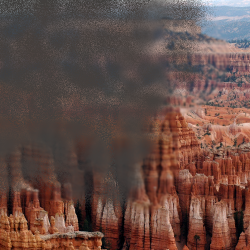
Retinal Detachment
The retina normally lies flat against the inside wall of the eye. A detached retina must be reattached to try to prevent loss of vision.
What causes Retinal Detachment?
The most common cause of retinal detachment is normal retraction of the vitreous (the gel-like substance that fills the eye) as we age. This can tear the retina, which will allow fluid to creep beneath it. The fluid causes the retina to separate from the back wall.
Who is most likely to get a retinal detachment?
You are more vulnerable if you are older than 50, nearsighted, have a family history of retinal detachment, or have had eye surgery or an eye injury.
What are the symptoms?
Most people report seeing flashes of light and floaters. Another common symptom is the appearance of what is often described as a dark curtain floating across the visual field.

Normal

Abnormal
How is a detached retina repaired?
A retinal detachment is treated surgically, in an outpatient facility or hospital. The two most common methods of treatment are scleral buckling and vitrectomy. Another technique is called pneumatic retinopexy. The latter two procedures use a gas bubble in the eye to temporarily hold the treated tear in place. All three surgical procedures use cryotherapy (freezing) or lasers to seal the retinal tear. The gas bubble then disappears on its own and is replaced by normal eye fluid.
When a gas bubble is placed in the eye, post-operative positioning is very important. Your surgeon will tell you how to position your head after the procedure.
